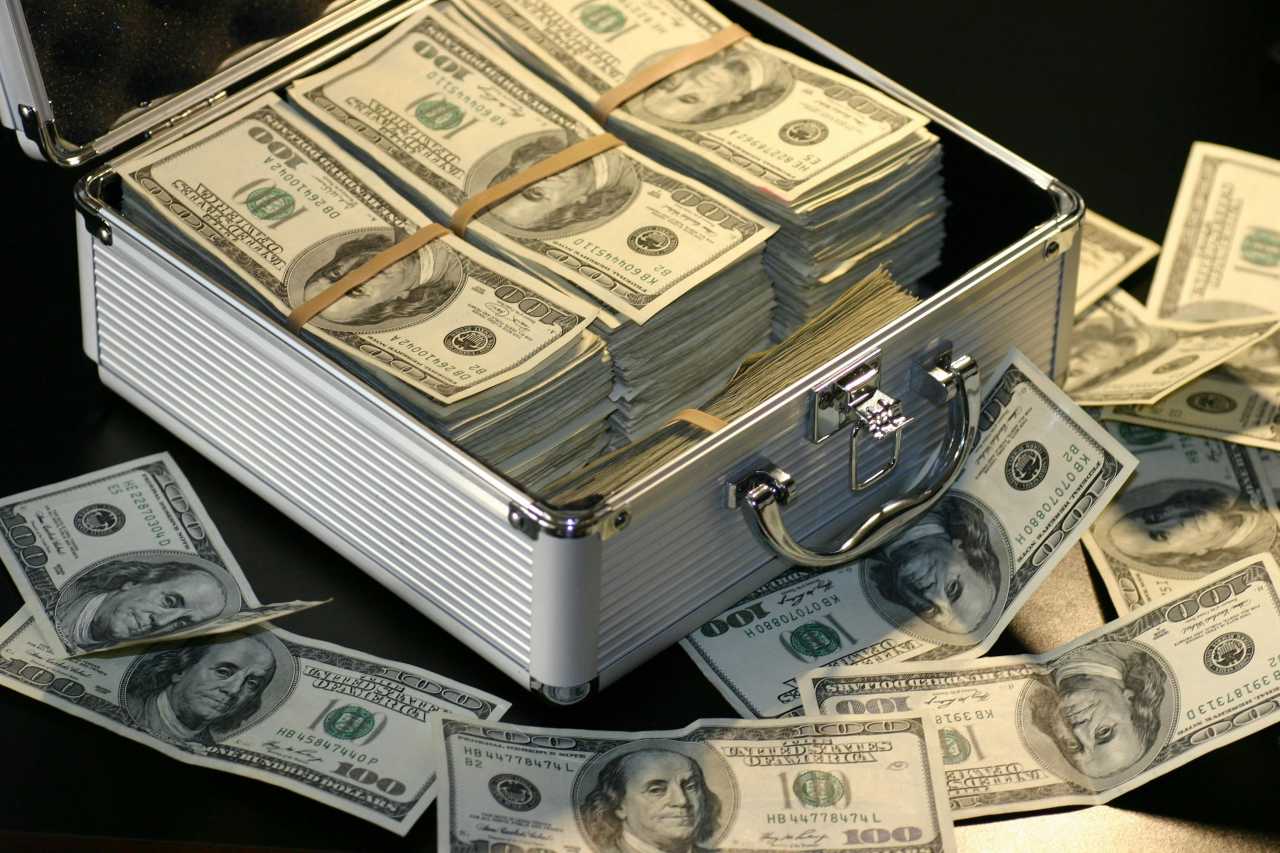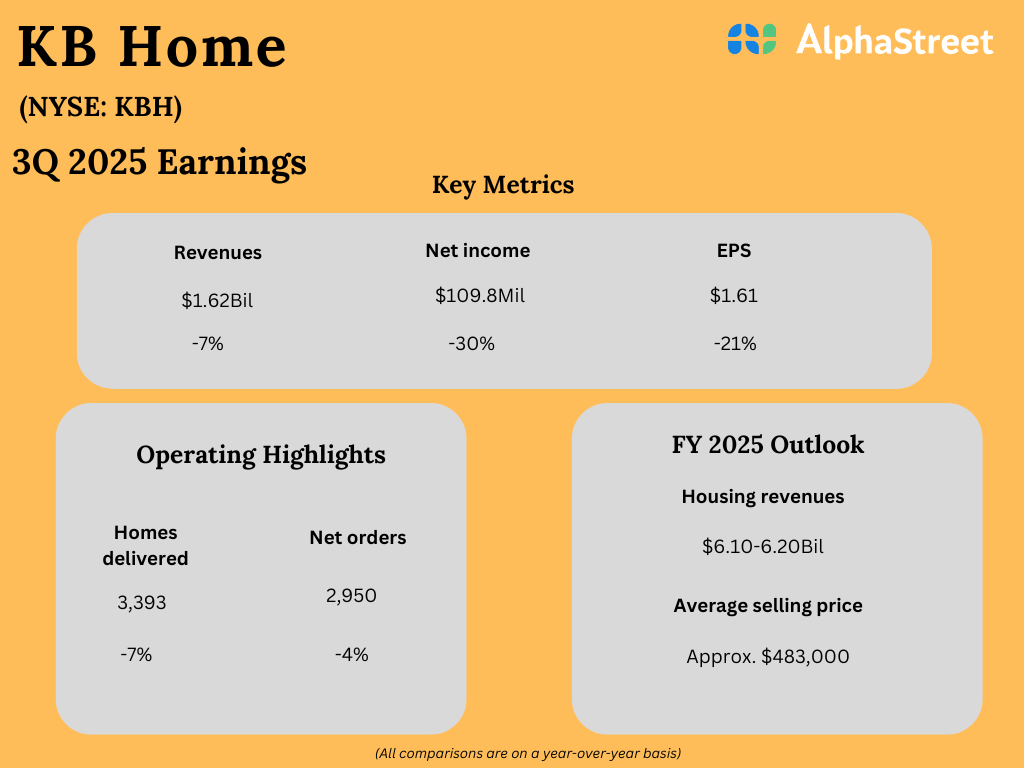Key Findings
A typical American household with four phones on a “family share” plan, paying $100 per month for taxable wireless services, would pay over $330 per year in taxes, fees, and government surcharges.
Taxes, fees, and government surcharges make up a record-high 27.60 percent of the average wireless services bill. Illinois residents continue to have the highest wireless taxes in the country at 38.32 percent, followed by Washington at 34.98 percent and Arkansas at 34.00 percent. Idaho residents pay the lowest wireless taxes at 16.82 percent.
Louisiana had the largest increase of any state in 2025—from 24.70 percent to 31.90 percent—due to the passage of a taxA tax is a mandatory payment or charge collected by local, state, and national governments from individuals or businesses to cover the costs of general government services, goods, and activities. reform package that increased the sales taxA sales tax is levied on retail sales of goods and services and, ideally, should apply to all final consumption with few exemptions. Many governments exempt goods like groceries; base broadening, such as including groceries, could keep rates lower. A sales tax should exempt business-to-business transactions which, when taxed, cause tax pyramiding. rate on wireless services from 3.45 percent to 10 percent.
The Federal Universal Service Fund (FUSF) charge increased again, from 12.76 percent to 13.36 percent. Average state and local taxes also increased, from 14.01 percent to 14.25 percent.
The federal Permanent Internet Tax Freedom Act prevents state and local governments from imposing taxes and fees on wireless internet access. Without this federal prohibition, taxes and fees that apply to wireless voice services could be applied to internet access and significantly increase the tax burden on consumers who access the internet using wireless devices.
Since 2012, the average charge from wireless providers decreased by 29 percent, from $47.00 per line per month to $33.36 per line. However, during this same time, wireless taxes, fees, and government surcharges increased from 17.18 percent to 27.60 percent of the average bill, resulting in consumer benefits from lower wireless prices being offset by higher taxes and fees.
Roughly 83 percent of low-income adults and 78 percent of all adults live in wireless-only households. Wireless taxes are regressive and create significant burdens on low-income families.
Introduction
Taxes, fees, and government surcharges on the typical American wireless consumer increased again, from 26.77 percent of a typical monthly bill in 2024 to 27.60 percent in 2025. This total includes state and local taxes averaging 14.25 percent and the Federal Universal Service Fund (FUSF) rate of 13.36 percent.[1]
This is the 16th edition of our report tracking the taxes, fees, and government surcharges imposed on wireless voice services by federal, state, and local governments. Our methodology remains consistent. We compare the percentage rates of the taxes, fees, and government surcharges imposed on taxable wireless services, referred to hereafter as “taxes.” Flat rate impositions, such as a $1.00 per month per-line 911 fee, are converted to a percentage using the average monthly industry revenue per line as tracked by the Cellular Telecommunications and Internet Association (CTIA).
The wireless market has become increasingly competitive. The result has been steady declines in the average price for wireless services. Over the last decade or so, the average monthly revenue per wireless line has fallen from $47.00 per month to $33.36 per month. Unfortunately, this price reduction for consumers has been partially offset by higher taxes.
There were about 579 million wireless subscriber connections at the end of 2024.[2] Wireless subscribers will pay approximately $12.5 billion in taxes to state and local governments in 2025 based on the tax rates calculated in this report, including:
$5.4 billion in sales taxes and other non-discriminatory consumption taxes that also apply to other taxable goods and services,
$4.3 billion in state and local 911 and 988 fees, which includes hundreds of millions of dollars that are not actually used for 911 purposes in some states, and
$2.8 billion in additional telecommunications-specific taxes.
Wireless services are often the sole means of communication and connectivity for Americans, especially younger people and low-income households. According to the Centers for Disease Control and Prevention (CDC), in 2024, 78 percent of all adults and 83 percent of low-income adults lived in wireless-only households.[3] The $7.1 billion in state and local taxes and fees that are levied in addition to sales taxes disproportionately impact Americans least able to afford them.
Wireless Taxes and Fees Set a New Record High in 2025
Taxes on wireless services increased to their highest level ever, driven by another FUSF surcharge rate increase and a small increase in state and local taxes. The state and local tax burden increased from 14.01 percent to 14.25 percent, while the FUSF surcharge rate increased from 12.76 percent to 13.26 percent.
Table 1. US Average Wireless and General Sales & Use Tax Rates
Notes: Methodology derived from Committee on State Taxation, “50-State Study and Report on Telecommunications Taxation,” May 2005. Updated July 2025 from; Federal includes 3% federal excise taxAn excise tax is a tax imposed on a specific good or activity. Excise taxes are commonly levied on cigarettes, alcoholic beverages, soda, gasoline, insurance premiums, amusement activities, and betting, and typically make up a relatively small and volatile portion of state and local and, to a lesser extent, federal tax collections. (until 5/2006) and federal universal service fund charge, which is set by the FCC and varies quarterly:
Federal USF 7/1/2025 — 37.1% Interstate safe harbor x 36.0% contribution factor = 13.36% effective tax rate
Source: State statutes; FCC data; local ordinances; author calculations.
The rate of the FUSF surcharge has been increasing steadily since 2017. These FUSF rate increases have been driven by the decline in the price of telecommunications services, combined with the shift in consumer purchases from telecommunications services to internet access. This has forced the FCC to increase rates just to keep revenues constant. The US Supreme Court recently heard a case challenging the constitutionality of the FUSF.[4] While the Court upheld the legality of the FUSF, the case has prompted new interest in reforming how the surcharge is collected and administered.
The combined state and local tax burdens in each state are ranked from highest to lowest in Table 2. Illinois has the highest wireless taxes in the country with state and local rates of nearly 25 percent.
Table 2. Taxes, Fees, and Government Charges on Wireless Services, July 2025
Note: The local tax rate is calculated as the average of the tax rates in the most populated city and the capital city.
Source: State statutes; FCC data; local ordinances; author calculations.
Figure 1 shows that Washington, Arkansas, New York, and Kansas round out the top five most expensive states for wireless taxes. Idaho, Nevada, and Montana have the lowest wireless taxes in the nation.
States have debated whether to expand the sales tax baseThe tax base is the total amount of income, property, assets, consumption, transactions, or other economic activity subject to taxation by a tax authority. A narrow tax base is non-neutral and inefficient. A broad tax base reduces tax administration costs and allows more revenue to be raised at lower rates. from tangible goods to services for decades, with proponents of expanding the sales tax base to services arguing that the disparity in taxation between taxable tangible goods and exempt services does not make sense. When it comes to wireless services, however, the exact opposite is true. Wireless services are subject to state and local taxes 1.8 times higher than the sales taxes imposed on goods, with the average state and local wireless tax rate of 14.25 percent and the average combined sales tax rate of 7.87 percent. In 17 states, wireless taxes are more than twice as high as sales taxes. Three states that have chosen not to impose a sales tax—Delaware, Montana, and New Hampshire—have special taxes on wireless and other telecommunications services.
Total Taxes Paid
Wireless consumers will pay about $12.5 billion in taxes, fees, and government surcharges to state and local governments in 2025 based on the tax rates calculated in this report. Less than half of this amount—$5.4 billion—represents state and local sales and use taxes. These taxes are broadly applied to taxable goods and some services and do not apply solely to wireless services. The remaining $7.1 billion is taxes that only target wireless and other telecommunications services. For a more detailed discussion of the methodology in this report, please see previous years’ reports.
The Permanent Internet Tax Freedom Act prevents state and local governments from imposing taxes on internet access services, including wireless internet access. Without the protection of this federal law, the high excise tax rates applied to taxable wireless services could be applied to internet access, and consumer tax burdens would be significantly higher.
Table 3. Disparity Between Wireless Tax & Fee Rate and General Sales Tax Rate, July 2025
Source: State statutes, FCC data, local ordinances, author calculations.
State Trends in Wireless Taxes
911 and 988 Fees
Most states impose a flat, per-line tax on telecommunications customers to fund capital and operating expenses for state and local emergency 911 systems. These fees vary significantly among states, from $0 in most counties in Missouri to a high of $5.00 per line per month in Chicago.[5] In 2025, California, Colorado, Mississippi, New Hampshire, New Mexico, South Carolina, Utah, and West Virginia increased 911 taxes. The largest increases were in Mississippi (from $1.05 per line per month to $2.05 per line per month) and New Mexico (from $0.51 per line per month to $1.00 per line per month). West Virginia, which already had the highest statewide wireless 911 tax at $3.64 per line per month, increased it further to $4.01 per line per month.
In 2021, a new tax began appearing on customer bills. The FCC mandated that a new three-digit number, 988, be designated nationally to contact suicide prevention hotlines that will be operated by the states. A law passed by Congress authorized states to impose 988 taxes to pay for some of the creation and operation of 988 crisis hotline centers. In 2021, Virginia was the first state to impose a new 988 tax at $0.12 per line per month. Since then, 10 additional states have enacted 988 taxes on wireless consumers. Illinois, Maryland, and Minnesota implemented new 988 taxes in 2025, while Colorado lowered its 988 tax from $0.14 per line per month to $0.07 per line per month.
State Universal Service Funds
Twenty-one states and Puerto Rico impose their own “universal service fund” (USF) charge on wireless services that provide subsidies for many of the same purposes as the FUSF. Under federal law, the federal government imposes the charge as a percentage of interstate revenues, and states may impose a charge as a percentage of intrastate revenues. Recently, however, some states have shifted from a percentage-based charge to a per-line USF imposition, which has resulted in a large portion of the state USF burden being borne by multi-line wireless plans.
The highest per-line charge is in Nebraska at $1.75 per line per month. A family with a share plan with four lines pays $7.50 per month ($90 per year) even if they have the lowest-price wireless plan. Other per-line state USF impositions are in Utah, New Mexico, Maine, Kentucky, and Maryland. On a positive note, California and Oklahoma reduced their per-line USF charges in 2025.
The remaining states continue to impose their USF charges on a percentage basis. Texas made headlines in 2022 when the Public Utility Commission approved a seven-fold increase in the state USF rate, from 3.3 percent to 24 percent of intrastate charges. A subsequent order reduced the rate to 12 percent of intrastate charges, which still resulted in a 350 percent increase in USF charges on wireless customer bills. In addition to Texas, other states with high USF rates include Kansas at 7.6 percent, followed by Arkansas (7.5 percent), Alaska (6.3 percent), and Oregon (3.8 percent). In 2025, Arkansas, Indiana, and Wyoming reduced their USF percentage charges while Kansas and Nevada increased them.
State Wireless Taxes
In addition to 911 fees, 988 fees, and USF charges, 13 states impose wireless taxes that are either in addition to sales taxes or in lieu of sales taxes but at a higher rate. In 2025, the Maine legislature voted to repeal the “Service Provider Tax” that imposed a higher state tax rate on wireless services. That repeal will take effect on January 1, 2026.
Table 4. State Wireless Taxes by State
Source: State statutes.
Local Wireless Taxes
Local governments throughout the country also impose taxes on wireless services that are not imposed on other goods and services. Many of these taxes are imposed because of legacy taxes that were established during the regulated telephone monopoly era that existed prior to the 1980s breakup of AT&T. Local governments in some states have longstanding authority to impose right-of-way (ROW) fees on telephone companies for placing poles, wires, and equipment on local property. In other states, localities impose franchise or license taxes on telephone companies in exchange for the privilege of doing business in a city.
In the late 1990s and early 2000s, when wireless services began to compete with wireline services, localities became concerned about losing revenues from local taxes on wireline telephone companies and sought to extend these taxes to wireless services. This occurred in some states even though wireless providers typically did not use the public right-of-way to place equipment or, when they did use public property like on top of buildings, the usage was de minimis and paid for through negotiated rental agreements. This response to changing consumer behavior can also be observed in local taxation of streaming services and cable companies, where localities are fighting to retain revenue by taxing streaming services as if they were using ROW like cable companies.[6]
Local governments in 14 states currently impose some type of tax on wireless services in addition to local option sales taxes. In most of those states, the taxes are additive and only further increase the tax burden on wireless services. California and Illinois are the exceptions; in those states, wireless services are subject to taxes in lieu of the sales tax but in most cases the wireless tax is higher than the sales tax. Table 5 provides a breakdown of the types of local wireless taxes that apply. Local taxes have a significant impact on the overall tax burden on wireless services in several of the states with the highest wireless taxes, including Illinois, Washington, Nebraska, New York, Utah, and Maryland.
Table 5. Local Wireless Taxes by Type
Note: Excludes local general sales taxes.Source: Local ordinances.
California has the highest local taxes, with rates up to 11 percent. Washington follows closely with local taxes as high as 9 percent, followed by Illinois (up to 7 percent) and Florida (up to 7 percent). In addition to these percentage-based taxes, Illinois allows local per-line taxes of $5.00 per line per month in Chicago, and Maryland allows Baltimore to charge $4.00 per line per month. Nebraska wireless consumers received some relief from high local taxes this year, as the governor signed legislation in 2024 to lower the cap on local wireless taxes from 6.25 percent to 4 percent.
Local governments apply a range of wireless taxes. In Chicago, a family of four paying $100 per month for taxable wireless services would pay nearly $36 per month (over $430 per year) in state and local taxes on wireless services. That same family in Baltimore would pay over $350 in state and local wireless taxes annually.
Table 6. State and Local Wireless Taxes and Fees on Single-Line and Multi-Line Plans in Selected Cities, July 2025
Source: Local ordinances.
The Regressive Impact of Wireless Taxes
Economists use the term “regressive” to describe tax systems that impose higher tax burdens on low-income taxpayers than on high-income taxpayers, as measured as a percentage of income. Because low-income households pay a greater percentage of their budgets on wireless services than do high-income households, they also pay a greater percentage of their budgets on wireless taxes. Therefore, wireless taxes are regressive.
The trend of increasing per-line impositions—for 911 and 988 taxes, state USF charges, and even general wireless taxes—makes wireless taxes even more regressive. Many consumption taxes have regressive effects, and while that is not in itself an argument against levying them, lawmakers should be cautious when increasing regressive taxTaxes can create different burdens on taxpayers of different income levels, measured by comparing taxes paid as a fraction of income. A regressive tax is one that creates a larger burden on lower-income taxpayers than on middle- or higher-income taxpayers. burdens, particularly in the case of a targeted excise tax that does not meaningfully internalize any external harms and often exceeds any amount necessary to pay for related government programs.
Excessive taxes and fees increase the cost of wireless services at a time when citizens are relying on wireless services more than ever for access to government services (including education), health care, remote work, and commerce. In fact, wireless services are becoming the sole means of communication and connectivity for many Americans, especially those struggling with poverty. Eighty-three percent of low-income adults had wireless-only service, and 78 percent of all adults were wireless-only at the end of 2024.
The Economic Impact of Excessive Wireless Taxes
Policymakers should be cautious about expanding wireless taxes, fees, and government surcharges for two primary reasons. First, as discussed above, wireless taxes are regressive and have a disproportionate impact on low-income consumers. Excessive taxes and fees increase the cost of access to wireless service for low-income consumers at a time when many rely on wireless service as their only telecommunications service.
Second, discriminatory taxes may slow investment in wireless infrastructure. Ample evidence exists that investments in wireless networks provide economic benefits to the broader economy because so many sectors—transportation, health care, energy, education, and even government—use wireless networks to boost productivity and efficiency. These economic benefits were especially important during the COVID-19 pandemic because wireless networks enabled employees to work remotely and allowed students to continue their studies. These trends have continued post-pandemic.
Network investment is important not only to consumers and businesses that use these wireless networks but also to the entire American economy. A report by the International Chamber of Commerce (ICC) surveyed the evidence from the United States and Europe as well as from the developing world. They found consistently that wireless infrastructure investment enables an entire entrepreneurial culture to focus on creating applications and devices to make businesses more productive and to improve the lives of consumers. These tools in turn make businesses more successful so that they can create new jobs that generate economic activity and tax revenues for governments.
The ICC notes, “[r]emedying the discriminatory tax treatment of telecom goods and services may reduce tax receipts in the short-term, but the longer-term increase in the use of advanced capability devices, service demand, and network deployment resulting from these tax reductions is likely to counteract this loss of revenue over time.” [7] Policymakers need to weigh the trade-offs between the short-term revenue benefits of excessive wireless taxes and the long-term economic impact on the state from reduced infrastructure investment.
Applying the sales tax, a traditional broad-based consumption taxA consumption tax is typically levied on the purchase of goods or services and is paid directly or indirectly by the consumer in the form of retail sales taxes, excise taxes, tariffs, value-added taxes (VAT), or income taxes where all savings are tax-deductible., is perfectly appropriate, but excessive targeted taxation of wireless services lacks the traditional justifications—a “user-pays” system or the internalization of social costs—for excise taxation, raising consumer costs and undercutting investment in a vital market.
Conclusion
Wireless consumers continue to be burdened with high taxes, fees, and government surcharges in many states and localities throughout the country. Well over half of the $12.5 billion in state and local taxes imposed on wireless services are discriminatory in nature, as they only apply to telecommunications services. These taxes disproportionately burden low-income Americans, and disincentivize investment in new wireless services.
To alleviate the regressive impact on wireless consumers, states should examine their existing communications tax structure and consider policies that transition their tax systems away from narrowly based wireless taxes and toward broad-based tax sources that do not distort the economy and do not slow investment in critical infrastructure like wireless broadband.
Stay informed on the tax policies impacting you.
Subscribe to get insights from our trusted experts delivered straight to your inbox.
Subscribe
[1] The program subsidizes telecommunications services for schools, libraries, hospitals, low-income people, and rural telephone companies operating in high-cost areas. The calculation of the FUSF surcharge rate assumes that wireless providers use the “safe harbor” percentage.
[2] Includes watches, tablets, and other connected devices. Robert Roche, “CTIA’s Wireless Industry Indices Report, Year End 2022 Results,” September 2025, page 7.
[3] Stephen J. Blumberg and Julian V. Luke, “Wireless Substitution: Early Release Estimates from the National Health Interview Survey, July-December 2024,” National Center for Health Statistics, June 2025, https://www.cdc.gov/nchs/data/nhis/earlyrelease/wireless202506.pdf.
[4] Federal Communications Commission v. Consumers’ Research, 606 U.S. (2025).
[5] Missouri has no state 911 fee on billed 911 service but does have a 911 fee on prepaid wireless services.
[6] Ulrik Boesen, “Cutting the Cord from Cable Has States Courting New Revenue Streams,” Tax Foundation, Jul. 19, 2021, https://taxfoundation.org/streaming-services-tax/.
[7] International Chamber of Commerce, “ICC Discussion Paper on the Adverse Effects of Discriminatory Taxes on Telecommunications Service,” Oct. 26, 2010, https://cdn.iccwbo.org/content/uploads/sites/3/2010/10/ICC-discussion-paper-on-the-adverse-effects-of-discriminatory-taxes-on-telecommunications-services.pdf.
Share this article



























